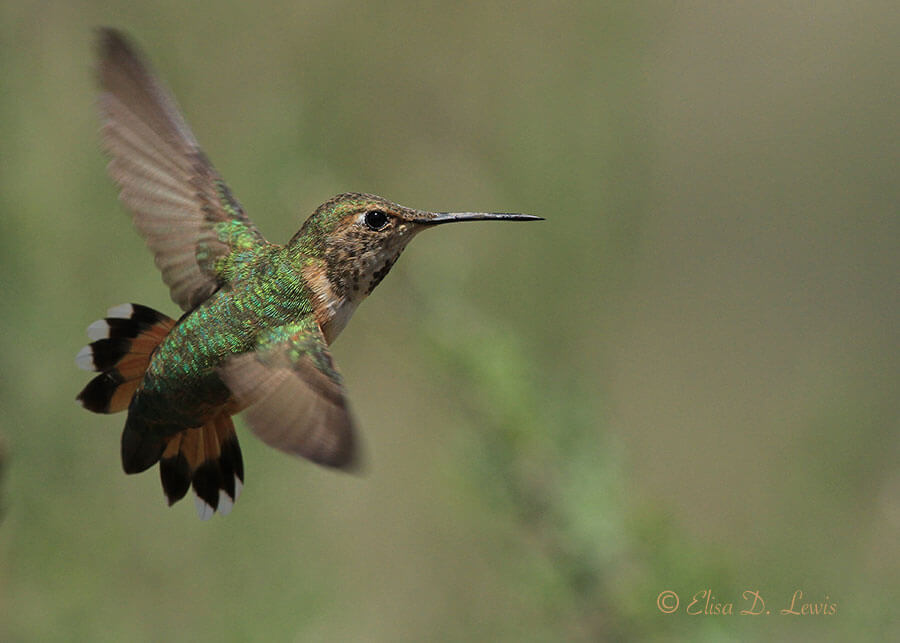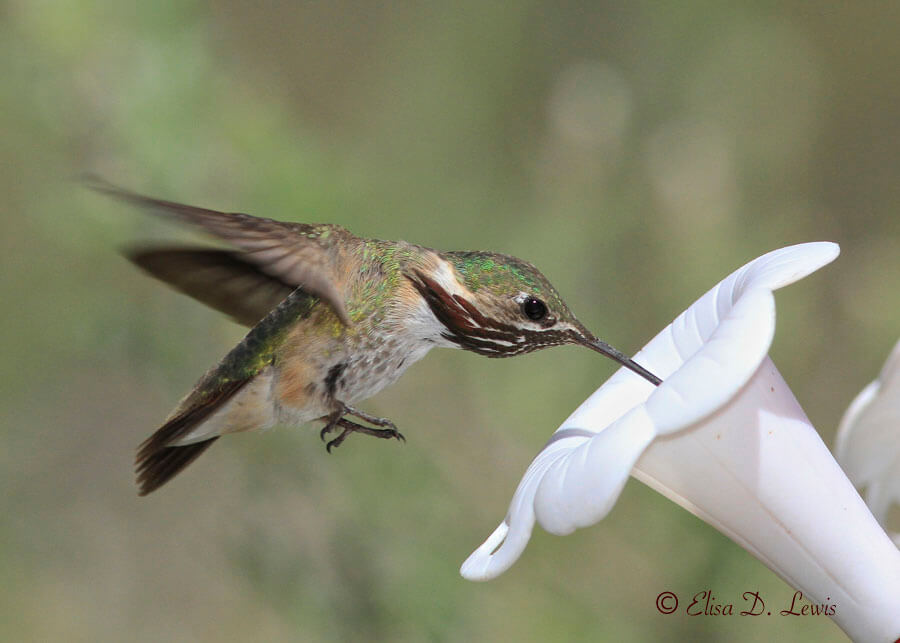
All systems in nature seek the lowest available energy state. This is a concept that my students could always grasp on a personal level. (Substitute “teenagers” for “all systems in nature” in the first sentence. See what I mean?) Human nature, like the rest of nature, tends to follow the path of least resistance. Hummingbirds are no different.
Consider the droves of hummingbirds attracted to sugar-water feeders. Well-kept feeders are an easy alternative to foraging, and field studies show that when nectar (or nectar substitute) sources are super abundant, high metabolic cost territorial activity decreases. Feeders are the path of least resistance for hummingbirds.
Human interest in hummingbirds and the resulting dedication to supplementing their diet has impacted their biogeography. Hummingbird banding data support the idea that feeders (along with native gardening practices) are the reason that overwintering hummingbird populations have expanded along the Gulf Coast after first migrating into Mexico in the fall. Feeders and native plantings also contribute to the so-called “oasis effect” observed in exurban developments in the arid southwest where increasing numbers of hummingbirds (among other birds) in resource-poor terrain take advantage of supplemental food, shelter, and water resources.

On our recent summer desert birding road trip, we found the Franklin Mountain State Park feeders buzzing madly with hummingbirds. Especially welcome was the opportunity to get close-up views of Calliope Hummingbirds – thought to be the smallest long-distance avian migrant in the world – on their 5,000 mile southern journey to Mexico from the northwestern US and Canada.
For Calliopes, fall migration starts early. Sources report typical Calliope departures from northwest locales in late August. But wait, it was late July and they were already in Texas … Was this early arrival due to a natural seasonal shift or could it just have been the oasis effect?
I hear like you see — like that hummingbird outside that window for instance.
© 2013 Elisa D. Lewis. All rights reserved. No text or images may be duplicated or distributed without permission.